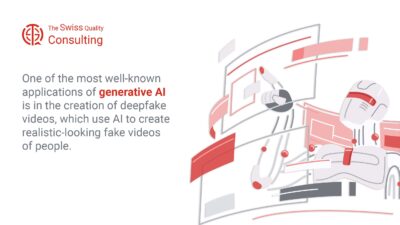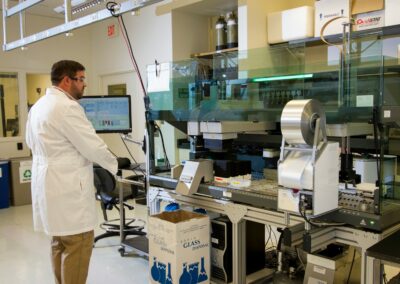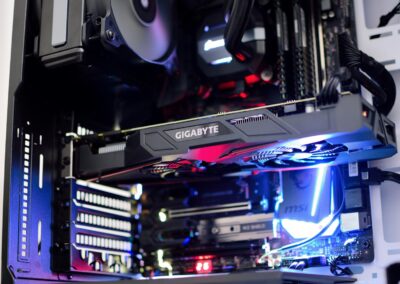Advancing Immersive Experiences with Cutting-Edge Solutions
Introduction: The Significance of Realistic Physics in the Metaverse
The integration of realistic physics in the metaverse is crucial for creating immersive and believable experiences. Developers face significant challenges in simulating realistic physics and object interactions, necessitating the use of advanced technologies. In regions like Saudi Arabia, the UAE, Riyadh, and Dubai, where technological innovation is a priority, mastering these challenges is essential for driving the next wave of digital transformation.
The metaverse is a virtual environment where users interact through digital avatars and objects, creating a sense of presence and reality. To achieve this, developers must simulate physical interactions and behaviors accurately. This article explores the key challenges and the technologies employed to address them, providing insights for business executives, mid-level managers, and entrepreneurs on the importance of realistic physics in the metaverse.
By understanding the complexities and solutions involved in this process, stakeholders can better appreciate the potential of the metaverse to revolutionize industries and enhance business success. From artificial intelligence (AI) to blockchain and generative AI, various technologies are pivotal in overcoming these challenges and advancing the metaverse’s development.
Challenges in Simulating Realistic Physics
Creating realistic physics in the metaverse involves several complex challenges. One primary challenge is the accurate simulation of physical interactions between objects and avatars. In the real world, objects obey the laws of physics, including gravity, friction, and collision. Replicating these interactions in a digital environment requires precise calculations and algorithms to ensure objects behave naturally.
Another challenge is the need for real-time processing. In a dynamic metaverse environment, physics simulations must occur instantaneously to maintain immersion. This demands significant computational power and advanced algorithms capable of handling numerous interactions simultaneously. Ensuring low latency and high responsiveness is critical for providing a seamless user experience.
Additionally, the diversity of objects and environments in the metaverse adds complexity. Developers must account for various materials, shapes, and properties that influence how objects interact. For instance, a virtual ball must bounce differently on grass compared to concrete. This level of detail requires sophisticated modeling and simulation techniques.
Leveraging Advanced Technologies for Realistic Physics
To overcome these challenges, developers leverage a range of advanced technologies. One of the most significant is artificial intelligence (AI). AI algorithms can predict and simulate physical interactions by learning from vast datasets of real-world physics. Machine learning models help refine these simulations, making them more accurate and responsive over time.
Blockchain technology also plays a vital role. In a decentralized metaverse, blockchain ensures the integrity and consistency of physics simulations across different platforms and environments. By recording interactions on a secure ledger, blockchain provides a reliable reference for verifying physical behaviors, reducing discrepancies and ensuring uniform experiences.
Generative AI is another key technology. It enables the creation of complex and dynamic virtual environments that respond realistically to user interactions. Generative AI can model intricate details such as fluid dynamics, particle systems, and deformable objects, enhancing the realism of the metaverse. This technology allows developers to create environments that are not only visually stunning but also physically accurate.
Applications and Benefits of Realistic Physics in the Metaverse
The integration of realistic physics in the metaverse has far-reaching applications and benefits. In the realm of business, it opens up new possibilities for training and simulations. For example, industries such as manufacturing and healthcare can use the metaverse to train employees in a safe and controlled environment. Realistic physics allows trainees to interact with virtual machinery or medical tools as they would in the real world, improving learning outcomes and reducing risks.
In the entertainment industry, realistic physics enhances gaming experiences, making them more engaging and immersive. Players can interact with game environments in intuitive ways, with objects responding naturally to their actions. This level of immersion is critical for maintaining user engagement and satisfaction.
Moreover, realistic physics in the metaverse can drive innovation in sectors like architecture and engineering. Professionals can create detailed virtual models of buildings and infrastructure, simulating real-world conditions to test structural integrity, environmental impact, and user interactions. This capability leads to better-designed projects and more efficient workflows.
Conclusion: The Future of Realistic Physics in the Metaverse
As the metaverse continues to evolve, the integration of realistic physics will become increasingly essential. Overcoming the challenges of simulating physical interactions requires leveraging advanced technologies such as AI, blockchain, and generative AI. These technologies not only enhance the realism of the metaverse but also open up new opportunities for business success and innovation.
For regions like Saudi Arabia, the UAE, Riyadh, and Dubai, embracing these advancements is crucial for maintaining a competitive edge in the global digital economy. By investing in the development of realistic physics and supporting technologies, these regions can lead the way in creating immersive and impactful metaverse experiences.
Business executives, mid-level managers, and entrepreneurs must recognize the potential of realistic physics in the metaverse and actively explore its applications in their respective industries. By doing so, they can harness the transformative power of the metaverse to drive growth, enhance operational efficiency, and achieve long-term success in an increasingly digital world.
#RealisticPhysics #Metaverse #AI #Blockchain #GenerativeAI #BusinessSuccess #Leadership #ProjectManagement #SaudiArabia #UAE #Riyadh #Dubai























